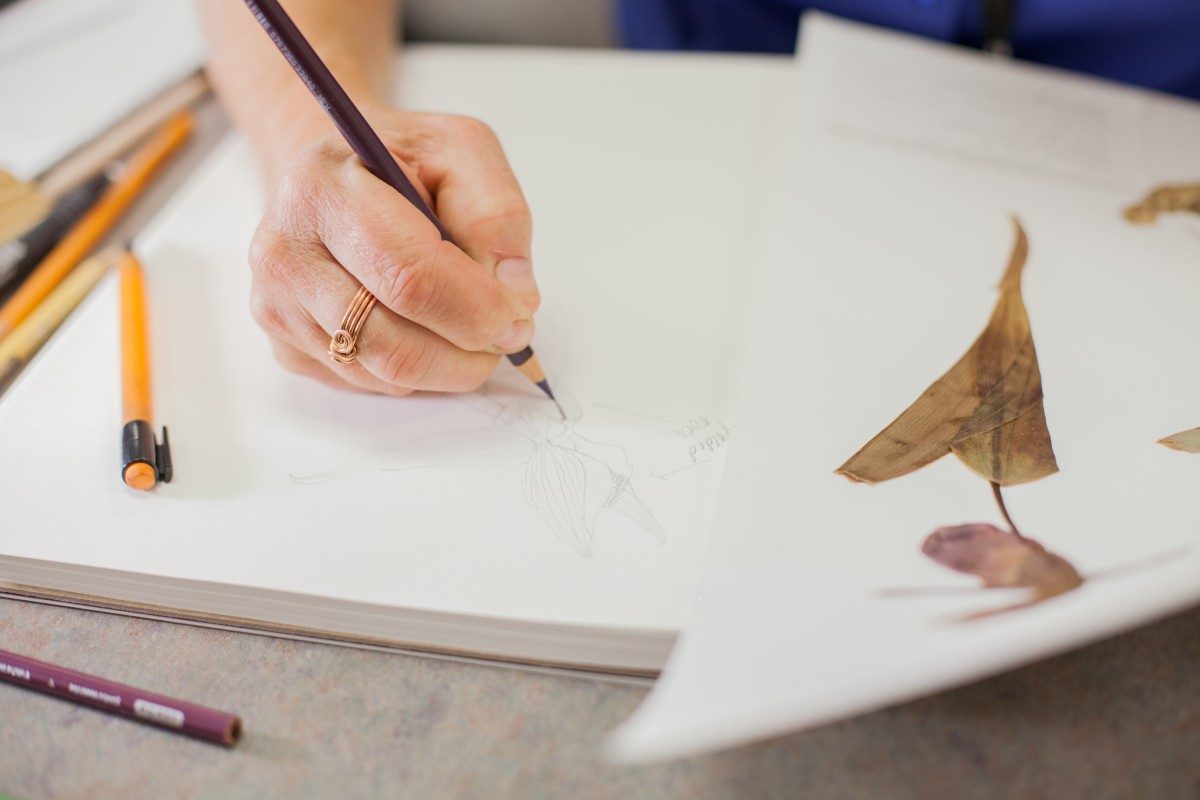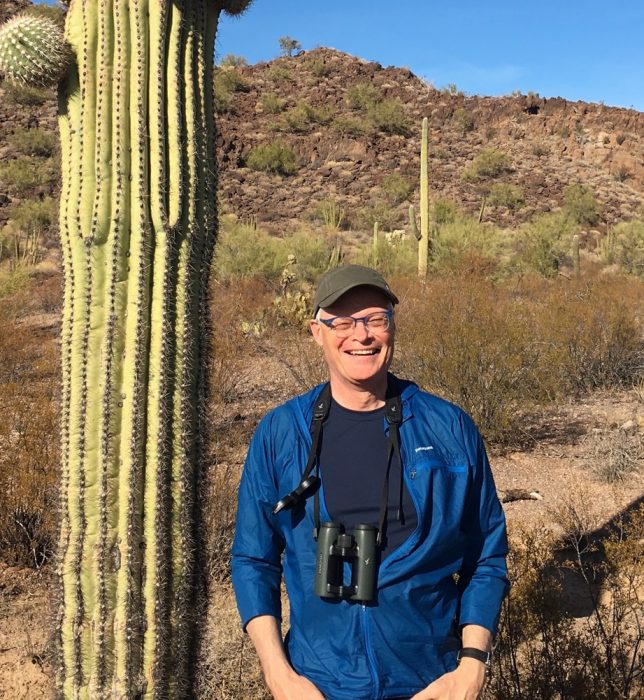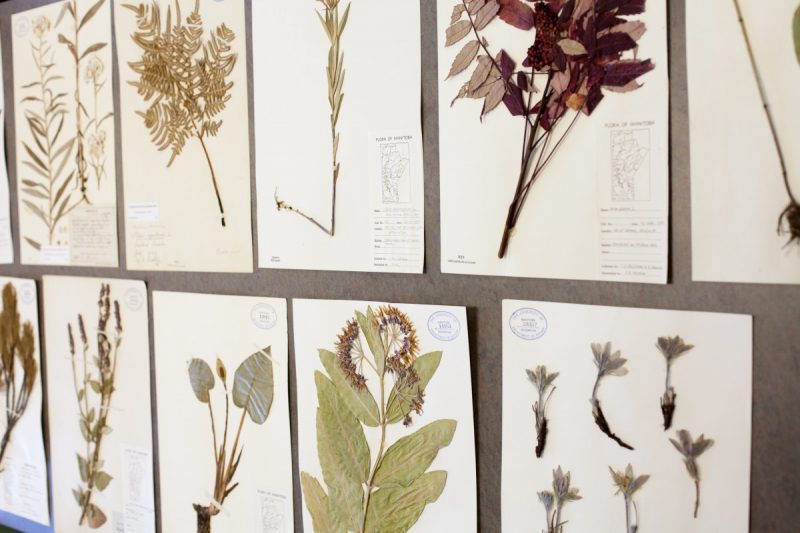
Dry Media IV: A Herbarium Art Exhibit
This week-long exhibit in downtown Winnipeg will celebrate the diversity of plants located in the University of Manitoba Herbarium by featuring the work of a wide variety of artists
This November, the Herbarium will present its fourth Dry Media Art Exhibit, featuring a variety of artwork resulting from the Dry Media workshop hosted this past September.
Ten Manitoban artists were invited to explore the University of Manitoba Herbarium – a diverse collection of plant specimens for scientific study – to view plant, lichen and moss collections under microscopes or live plants in the Buller Greenhouse.
Inspiration often arrives in unexpected packages, the Herbarium Art Exhibit is no exception. Bring your friends and family to the Forth Gallery (171 McDermot Ave) on Friday, November 2 at 7:00 p.m. for the opening and celebration of the exhibit. See how 10 local artists transformed groupings of plant specimens from the Herbarium into art.
UM Today reached out to Herbarium Curator Bruce Ford, a Professor in the Department of Biological Sciences, to ask him about his role and the inspiration behind the Herbarium Art Exhibit.
UM TODAY: FOR THOSE WHO DON’T KNOW, COULD YOU GIVE US A QUICK OVERVIEW OF THE UNIVERSITY OF MANITOBA HERBARIUM FACILITY?

Herbarium Curator Dr. Bruce Ford
Bruce Ford: A herbarium is a collection of dried plants. Specimens are gathered in the field, dried, and pressed. They are then glued on archival paper or stored in envelopes. Labels, which includes the name of the species and a description of the location (including GPS coordinates) and habitat where the plant was collected, are attached to each specimen. These plants are then stored in fire-proof cabinets here in the Department of Biological Sciences. Founded in 1907, the University of Manitoba Herbarium houses the largest plant collection in the province, over 100,000 specimens including 20,000 moss, liverwort, and lichen collections. Our specimens are used by both botanical researchers and artists alike. These collections are an important resource for studies on the distribution, ecology, and scientific classification (= taxonomy) of plants. In addition, each specimen can be viewed as a work of art so they serve as an inspiration for artistic creativity.
AS CURATOR OF THE UNIVERSITY OF MANITOBA’S PLANT HERBARIUM, YOU HAVE MANY DIFFERENT RESPONSIBILITIES. HOW DO YOU DESCRIBE YOUR ROLE AS THE CURATOR?
As the Curator of the Herbarium, I am responsible for the maintenance and growth of the plant collection. I also facilitate scientific research and artistic expression, and I make sure that as many people as possible know about this amazing facility. For example, I liaise with scientific researchers from all over the world in terms of answering their questions about the distribution and occurrence of plant species in Manitoba. I also loan specimens to these researchers for their own studies, and we exchange specimens with other herbaria in order to increase our own specimen holdings. I have also been working with the Assistant Curator, Diana Sawatzky, and a dedicated group of volunteers, to digitize our collections so that specimen images and data can be accessed by the general public through Canadensys (canadensys.net), Canada’s largest online specimen database. Finally, in collaboration with the Assistant Curator, and local artists, I have had the privilege of hosting botanical art workshops, and showcasing the amazing work that has been inspired by our collections in local galleries like Forth.
WHAT WAS THE INSPIRATION BEHIND THE ART EXHIBIT?
In 2015, bio-artist Helga Jakobson and Diana Sawatzky shared a dream of creating a new space in which artists could come together to research existing biological collections, and present a body of work to show the community that art and science are complementary. In this spirit of collaboration, the first Dry Media weekend workshop was organized for a group of local artists in the University of Manitoba Herbarium. Following several presentations, exploring themes of bio-art and botanical illustration through the ages, participants were able to investigate the complex beauty of each plant specimen through the use of microscopes, camera lucida, and digital image capturing technology. The ideas that came out of this botanical journey helped to inspire each artist’s work and ultimately lead to a collective exhibition that was hosted by the Edge Gallery. Since this initial project, we have hosted three other botanical art workshops, attended by over 45 artists and art-inspired biologists. Our latest workshop took place September 8-9, 2018. The group exhibition, co-curated by Helga Jakobson and Diana Sawatzky, opens on November 2 at 7:00 PM at the Forth (171 McDermot Ave.) and runs until November 9 (closed Monday, Nov. 5).

Herbarium Plant Specimens // Image: Kira Koop
EXHIBITION DESIGN IS IMPORTANT, AND CAN HAVE A STRONG IMPACT ON THE VIEWER. IS THE DESIGN OF THIS EXHIBIT CREATED WITH THE PURPOSE OF EDUCATING THE VIEWER?
Installation day is the big reveal for Helga and Diana who experience much of the artwork for the first time. Diana describes exhibition design as being “explosive” or “spontaneous” where possibilities are largely governed by the art and the layout of the gallery space. The artists are given the role of educators, presenting the herbarium to the viewer in an approachable way by finding inspiration in the unique aesthetics of herbarium specimens.
WHO ARE THE ARTISTS PARTICIPATING THIS YEAR?
We’re lucky to have a group of talented and established Winnipeg artists, many of whom are involved with MAWA (Mentoring Artists for Women’s Art) and include the following:
Charlene Brown
Tricia Wasney
Corinne Kennedy
Roewan Crowe
Tracy Peters
Heidi Eigenkind
Willow Rector
Connie Chappel
Bev Pike
This year’s exhibit also features work by Dr. Carla Zelmer (Instructor, Department of Biological Sciences, University of Manitoba and Manager of the Buller Greenhouse) and Diana Sawatzky.
IF SOMEONE IS INTERESTED IN PURCHASING ART PIECES WHAT SHOULD THEY DO?
Interested buyers can contact Diana Sawatzky to obtain artist contact information.






